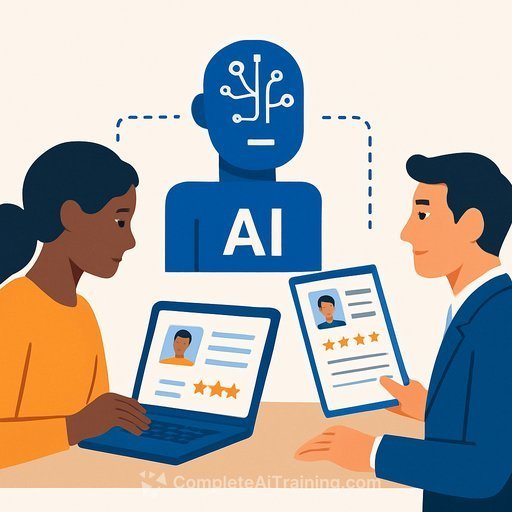AI-based recruitment: smart efficiency or risky business?
AI is changing how HR sources, screens and books interviews. A third of UK companies expect productivity gains, and the pitch is simple: faster shortlists, fewer admin loops, better insights.
But speed without safeguards invites trouble. Poorly set up systems can discriminate, breach data law and even feed fake evidence into disputes. HR carries the liability, not the tool vendor.
Where AI helps HR teams
- Screen CVs and rank candidates against job requirements.
- Schedule interviews and automate updates to applicants.
- Flag skills gaps and generate concise hiring reports.
- Run structured, bot-led pre-screens to save hiring manager time.
These gains are real. The risk is assuming the tech "just works" without checks, context or oversight.
The discrimination risk
AI learns from historical data. If that data reflects skewed hiring patterns, the tool can amplify bias. The well-known example: an internal tool at Amazon that downranked signals linked to women because it was trained on mostly male CVs.
Under the Equality Act 2010, both direct and indirect discrimination are unlawful. If an algorithm disadvantages protected groups, even unintentionally, employers can face claims under sections 13 or 19. The duty to prevent discriminatory outcomes sits with the employer.
Equality Act 2010 guidance (gov.uk)
Data protection and automated decisions
The GDPR and Data Protection Act 2018 restrict significant decisions based solely on automated processing. In practice, you cannot let an AI system make hire/no-hire calls without meaningful human involvement. Human review must be active, informed and capable of changing the outcome.
Be transparent with candidates about your use of automation, your lawful basis, and their rights. Complete a DPIA where appropriate, especially if you use profiling or large-scale screening.
ICO guidance on automated decision-making
Data security: easy to get wrong
AI tools make it tempting to paste in real CVs, internal notes or interview transcripts. That's a leak risk, especially with public models. Samsung banned staff from using generative tools after sensitive code was pasted into ChatGPT.
Set clear rules: what data can be shared, which tools are approved and which are prohibited. Lock this down with technical controls, not just policy PDFs.
When AI evidence backfires
Courts are pushing back on unverified AI output. The High Court has flagged instances where filings cited non-existent cases suspected to be generated by AI. In another matter, HMRC highlighted authorities that turned out to be fabricated and were disregarded.
Lesson for HR: never rely on AI-generated summaries, "case law," or analytics without verification. If it feeds into a decision or a dispute, you need source documents and human checks.
Practical steps for employers
- Define approved tools and banned uses. Prohibit uploading confidential or candidate personal data into public systems.
- Run DPIAs for recruitment use cases. Document risks, mitigations and your lawful basis.
- Build human review into every decision point. Set thresholds for escalation and give reviewers authority to overturn outputs.
- Audit for bias. Test outcomes across protected characteristics and fix issues fast.
- Vet vendors. Demand explainability, model change logs, audit rights, data use limits and clear liability terms.
- Tighten data hygiene. Minimise data, set retention limits and restrict access by role.
- Give candidates clear notices. Explain the role of AI, the factors assessed and how to request human review.
- Train HR and hiring managers. Focus on prompt discipline, data handling, bias awareness and verification habits.
- Monitor in production. Keep decision logs, sample decisions for quality and track complaints.
- Prepare for incidents. Have a plan for suspending tools, notifying stakeholders and remediating errors.
Quick compliance checklist for HR
- We do not make significant employment decisions solely by automation.
- We have a written AI policy, with governance and tool approvals.
- We complete DPIAs for AI-driven hiring processes.
- We run bias tests and record results and fixes.
- We provide candidate privacy information and human-review routes.
- We verify AI outputs before they reach files, offers or tribunals.
Bottom line
AI can cut admin and improve consistency, but it will mirror your data and your process. Keep significant decisions in human hands, stress-test the system and document everything. Skipping oversight is a fast path to claims and headlines.
Further reading: Equality Act 2010 and ICO guidance on automated decision-making.
If your team needs practical upskilling on safe, compliant AI use in HR, explore curated options at Complete AI Training.
Your membership also unlocks:






